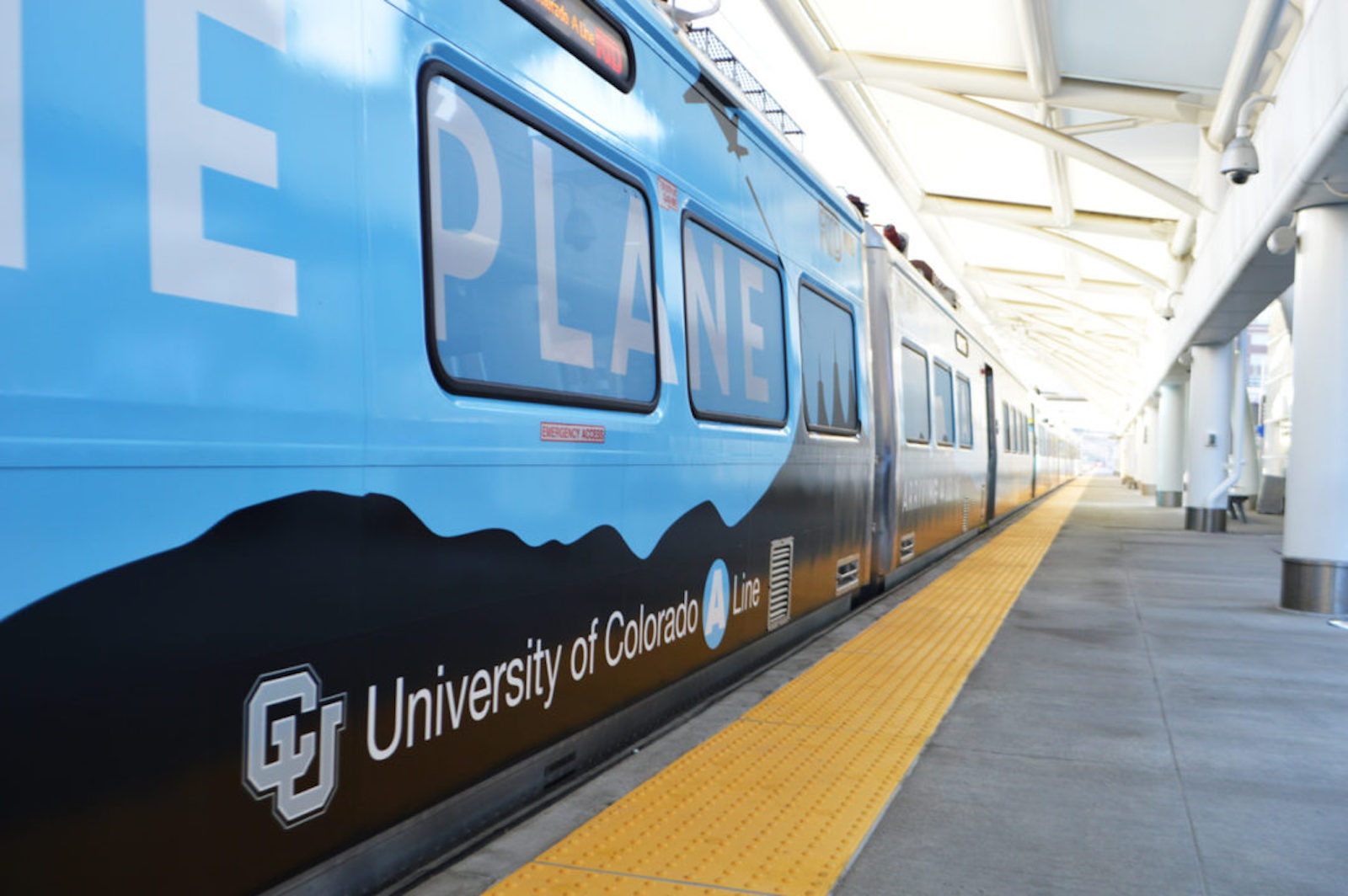The Local newsletter is your free, daily guide to life in Colorado. For locals, by locals.
On April 22, 2016, thousands of people lined up to enjoy free rides on RTD’s much-anticipated A Line commuter train, which runs between Union Station and Denver International Airport. Unfortunately, many of them are still stuck waiting for a delayed departure (kidding).
In all seriousness, the $1.2 billion commuter train has experienced a few setbacks during its first year of operation. So while we continue to applaud the $5.6 billion FasTracks program that is delivering a convenient and efficient light-rail network, we think RTD should learn a few things from their miscues. Which is why we’re justified in pointing out all the ways the A Line has gotten an “F” during its first 12 months. (We’d actually grade it at about a C+/B- overall—not having to sit in I-70 traffic to and from Denver’s only airport continues to be a positive.)

April 27, 2016: The train shuts down for about 45 minutes because of a switch malfunction. An RTD spokesperson tells the Denver Post, “They happen all across the country everyday. They’re usually quick to fix.”
May 11, 2016: The gates at A Line railroad crossings—traditionally, an essential part of any train-based operation—don’t work right. Some don’t come all the way down. Some fall just fine, but also do so when no train is coming, causing unnecessary delays for frustrated motorists. (To be fair, those drivers wouldn’t be frustrated if they took the light rail, but whatever.) To make matters appear worse, RTD officials knew of these issues for almost a year, but really wanted to launch the A Line on time. And that’s why you’ll find all those (mostly) genial “flaggers” are posted up at A Line road crossings.
May 24, 2016: A direct lightning strike halts service, proving that Zeus, the God of thunder, hates public transportation.
June 15, 2016: After another lightning strike shutters the A Line, RTD board members bemoan the operational glitches that are ruining the transportation system’s hard-earned rep. On the bright side: the A Line runs on-time nearly 90 percent of the time and ferries nearly 17,000 riders per day, a 1,000-rider increase compared with week one. But, no, everyone wants to focus on the fact that lightning somehow struck the same train twice in less than a month.
August 10, 2016: A lengthy delay followed by a lengthy delay. But, hey: No lightning!
September 23, 2016: The Post reports that RTD told the private contractor building the A Line that it wasn’t totally onboard with some of the design features way back when LeBron James still played for the Miami Heat (2013). For example: One RTD project director asked, Hey, how about something that protects the train from lightning? Denver Transit Partners, the private contractor, responded, Nah. Still, 18,881 people per day take the A Line—which already exceeds RTD’s one-year prediction.
November 18, 2016: RTD officials announce that neither the G Line (between Union Station and Wheat Ridge) nor the R Line (Aurora to Denver to Lone Tree) will be opening in 2016 as planned. The R Line finally debuts in February. We’re still waiting on the G Line—which kinda sounds like a rap song, right?
December 2016: The board informs RTD boss Dave Genova that he won’t be getting his performance bonus—which could have been up to $27,500—for 2016 because of the A Line’s woes. Talk about the naughty list.
February 1, 2017: The Federal Railroad Transportation Administration grants RTD yet another 90-day extension to fix its safety gates. Flaggers rejoice.








